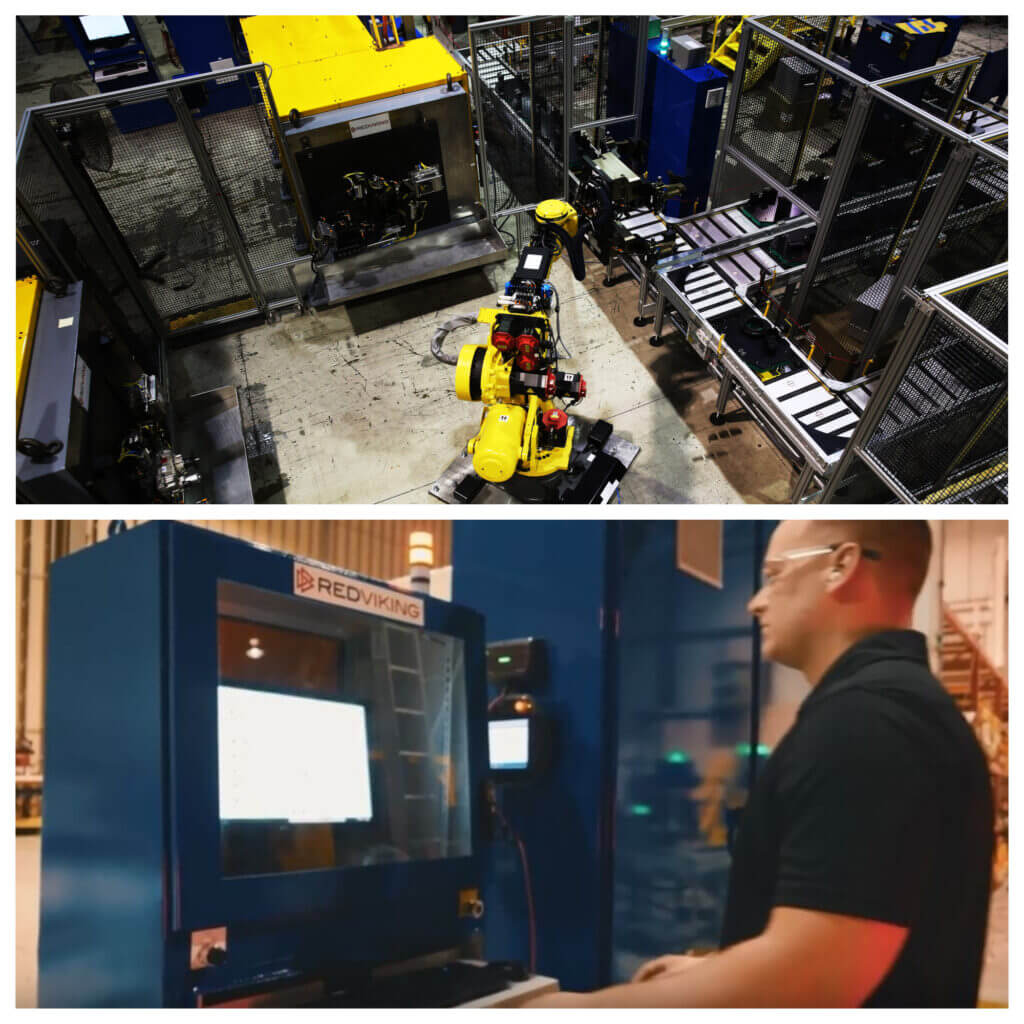This is an excerpt from Automation World featuring Christine Erickson of RedViking:
A turnkey system was designed to provide a tier-one automotive supplier with the flexibility needed for its end-of-line test and assembly cell.
The problem: A tier-one automotive supplier needed a turnkey solution that would allow it to test functionality and perform final processes on a transfer case product line. The end-of-line test systems needed to support two different products and be designed to fit within existing infrastructure. The RedViking solution: We designed and built an end-of-line transfer case test and assembly cell. The cell included two test stands, robotic part transfer and integrated final processing conveyors. Additionally, RedViking designed a manufacturing execution system (MES) for the entire assembly line, including the end-of-line test cell. The machine was designed to fit within a tight customer-specified footprint and handle automated changeover for a mix of products. The process first allows for assembled and oiled parts to arrive from a delivery conveyor into the cell. The part-present signal and model type is then communicated via Ethernet to the part transfer robot. With this information, the robot actuates the appropriate grippers and picks up the matching part from the delivery conveyor. The robot has dual grippers so it can hold two parts and unload a tested part with one gripper, flip around and load a new part from the other gripper without having to take time to travel to a drop-off/pick-up location in between. Designed to allow any combination of models, the robot end-of-arm tooling (EOAT) allows a seamless changeover between parts. The mirroring test stand provides even more functionality without sacrificing throughput, and the system can support varied test profiles based on model variation or other complexity. The availability of longer test time allows for more functional testing on each part and improves quality assurance of the product for the end user.
Automated tooling designed to engage each transfer case both mechanically and electrically allows full control of all test article functions. As the robot delivers the part, the clamps seat it in place and the driveline splines extend forward, spinning slightly until they can slide into full positions. Accelerometers extend to their proper locations, and an electrical connector slides into place and plugs in. Large slides inside the test stand enable flexibility in the positioning of the drive shafts. The robot loads the part, the test stand connects to the test article, and the test executive runs the dynamic test. Depending on the results of the test, the robot unloads the part to one of two conveyors for final assembly checks or rework. RedViking’s proprietary Vsync platform includes all fundamentals needed to run the dynamic testing software system. The test executive includes a highly configurable sequence editor, which allows engineers to change the sequence without software code changes. With manual and automatic control, the user can see an overview of the unit under test, as well as trends, active alarms and maintenance tracking. The user also has access to basic user management.
The machine was designed to fit within a tight customer-specified footprint and handle automated changeover for a mix of products.
In addition, RedViking designed a turnkey MES to run both the main assembly line and our end-of-line test and related systems. Batch-level traceability, customer serial-number generation and part characterization data are handed off from the RedViking test system to the end customer’s manufacturing system. This enables each car’s calibration to be tuned based on data collected during the test cycles. In addition, the MES provides for part validation and gate checking at each operation. Now, our customer is able to use this system to find any part based on incoming serial number, search for all units produced within a batch of parts, and trend process data from any machine parameters. Though we offer our own Argonaut platform to manage the traceability data, this customer preferred us to use their existing MES platform to integrate the line. Our MES team worked with the customer to develop custom part tracking software for the line within the existing framework that tracks each part through the full assembly/test process and builds each part a birth certificate. Watch a video of the system in operation. Christine Erickson is the project team lead at RedViking, a certified member of the Control System Integrators Association (CSIA). For more information about RedViking, visit its profile on the Industrial Automation Exchange.






